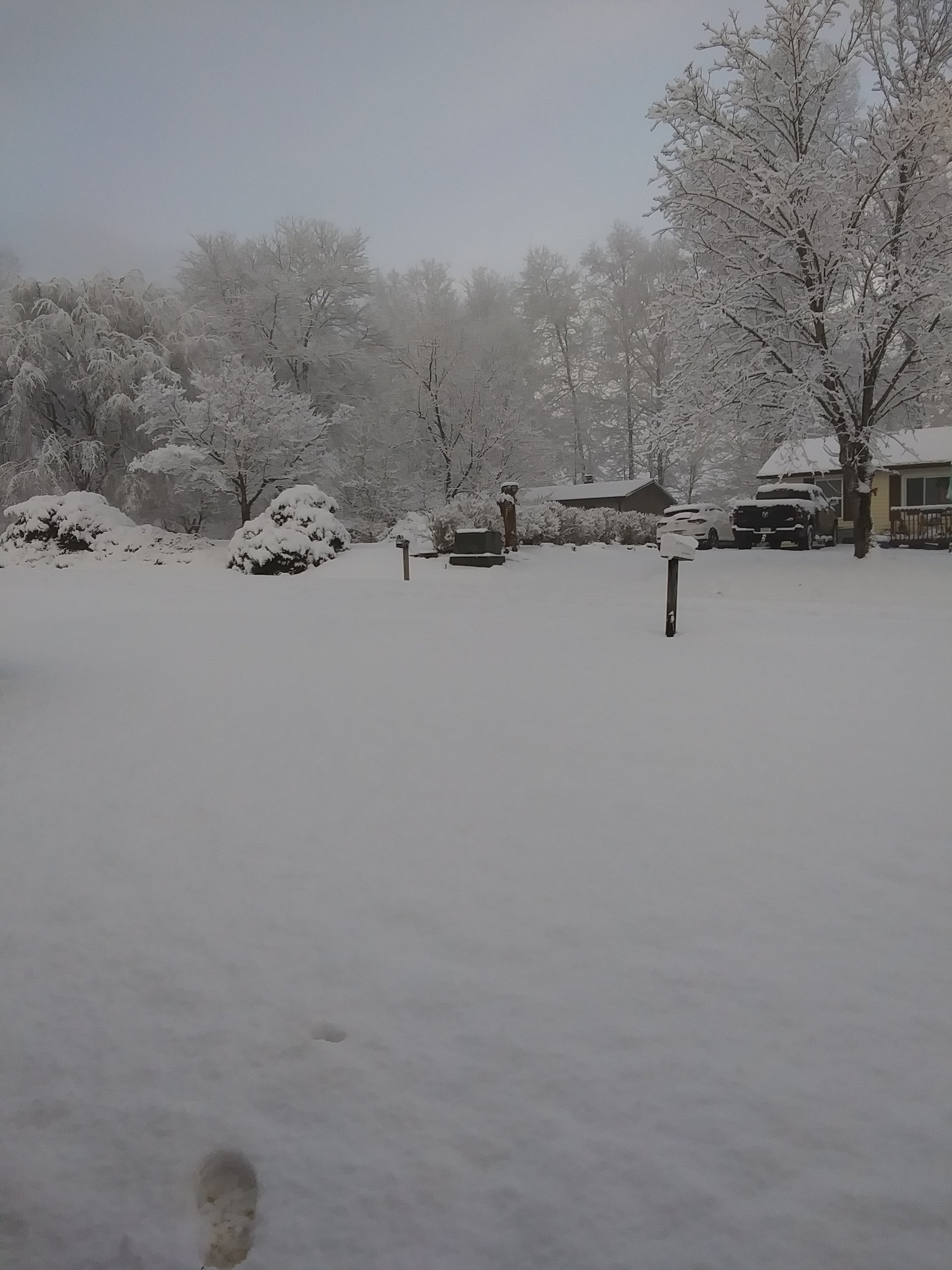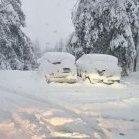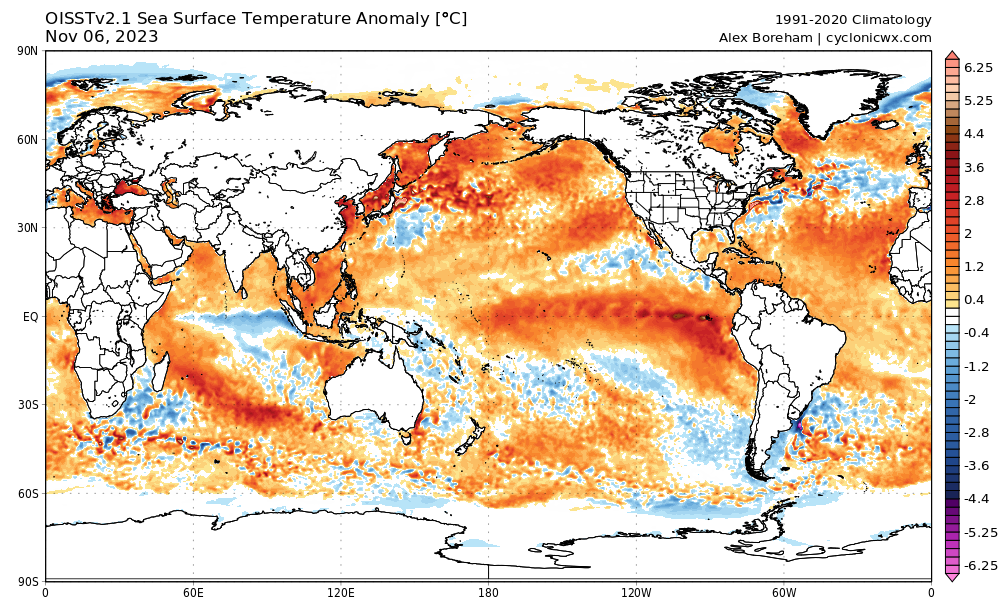-
Posts
3,217 -
Joined
-
Last visited
Content Type
Profiles
Blogs
Forums
American Weather
Media Demo
Store
Gallery
Posts posted by Daniel Boone
-
-
20 minutes ago, CAPE said:
I would expect Dec to be what it usually is, regardless of ENSO state.

Yeah really. Sad how we miss Decembers of yore.
-
Weeklies basically warm east/ cold west . Kicked can last couple weeks. They've not been that good lately, so probably wrong, at least as far as a week or so.
It may be those super warm SST'S off Japan that's throwing things off kilter.
-
57 minutes ago, Itryatgolf70 said:
I lived in Southaven ms back then but now I'm in jackson tn. Two weeks back to back with events and that was it
Yeah, unfortunately you guys in the western forum area missed out on much of it.
Btw, I've been in Jackson. My Sister used to live in Humboldt. Nice area. Reelfoot not far from there.
-
4 minutes ago, Itryatgolf70 said:
Only way to look at is that we don't have alot of opportunities even in great winters because we are in the south. 09-10 only got two events, which I was wanting 4-5 lol
Where do you live ? We had alot of events here in 09-10.
-
6 minutes ago, Itryatgolf70 said:
Hopefully we don't go down 94-95 pathway anytime soon. Another warm winter
Yep. I'm hoping not. Severe Storms in January that Winter.
-
9 hours ago, John1122 said:
Barely had misty sprinkles here so far. Hopefully it doesn't die out before we can get at least 1/4th inch.
The November temperature outlook is deeply depressing for my winter loving self. We can still have a snowy winter after a warm November but the odds favor it going the other way. I hope we can get a few more rain events just to get the fire danger in the rear view.
Yeah, definitely not looking good irt November correlation. Many esp. MA see December as main one. Stats show November here. Not many went on to be Great Winters when November was mild. -94-95 starting to stick out again. Only good aspect to it was abundance of rain . It was backloaded but, only received several minor snowfalls of generally an inch or less in February. March did produce a Rain to Thundersnow event with a general 4 to 12" in far SWVA. Up to 18" reported in portions of Harlan and Letcher Co. KY.
Just off memory, my Season Total was around 8". Paltry but, not like last Winter's 2.7.
-
 1
1
-
-
4 hours ago, strongwxnc said:
Thanks! I’ll figure it out when the time comes.
.Nice Unit ! I hope everything goes smoothly.
-
2 hours ago, strongwxnc said:
I plan on upgrading my home weather station (current is Ambient 2902-A and moving to a Ambient 5000) and I was wondering if I can keep my same CWOP info that I have used for the last few years. Or If i will have to create a new one.
Anyone got experience with this?
https://mesowest.utah.edu/cgi-bin/droman/meso_base.cgi?stn=G1106
You can keep same.
-
23 minutes ago, Met1985 said:
Yeah I have my doubts about any real meaningful rainfall over the next 10 or so days.
Yeah, it's really depressing to say the least. Forest fires are really smoking up the air. Really messing up my Sinuses.
-
 1
1
-
-
2 hours ago, Itryatgolf70 said:
We will see who was right and who was wrong after winter because there really are a little more moving parts than normal this year

?? We were referring to patterns. If a pattern was exactly same as late 70s in how it would still be below normal in today's climate. Otherwise, could go either way as far as winter. HLB I think is our main ticket we need this year.
-
16 minutes ago, brooklynwx99 said:
@griteater would have something to say about the polar regions looking unfavorable
I am seeing more evidence for blocking than not. moderate to strong +ENSO events favor blocking. then factor in the -QBO and solar and it's pretty heavily favored to see periods of blocking this winter
Yeah, definitely more evidence.
-
3 hours ago, michsnowfreak said:
The 1970s were in a league of their own for cold. If we were dealt the same pattern as we had in the late 70s, it would be way colder than average. Also remember, early to mid 20th century winters were much warmer than 1960s-70s ones. Below are the decades average winter temps at Detroit. The 1970s stick out like a sore, cold thumb.
1870s – 25.21880s – 27.61890s – 26.51900s – 24.91910s – 25.51920s – 25.81930s – 28.31940s – 27.01950s – 28.61960s – 26.21970s – 24.81980s – 25.91990s – 29.22000s – 27.72010s – 28.21874-2021 – 27.0Exactly point I was making. Glad you followed up. I thought about it after posting that and it would still be as you said way below normal since "normal" or average temps have been raised.
-
 1
1
-
-
5 hours ago, snowman19 said:
Are you looking at what’s going on right now oceanic wise? They are all about to warm big time. You’ll just ignore it when it happens though. Funny, don’t see you mentioning the RONI anymore lol And besides Eric Webb, the other tweet I just posted gave a very clear explanation of why the MEI is the way it is.
And I’ll admit, you have Mark Margavage, Joe Bastardi, Henry Margusity and Tony Pann on your side, going HUGE cold and snowy winter, MEI to the rescue!!! 4 true all stars with those guys in the weather community. Legends. I’m sure this winter will work out superbly for you when you have them on your bandwagon lol
Not only them but, several pro mets here as well. I don't know why you are so hellbent on going against everyone here that sees things differently. Granted, it could go either way at this juncture. Minus blocking , that latest update Apparently, you want a mild Winter. Your liking, nothing wrong with that.( With economic problems, would be a good thing itr). If not, why want to go all out against those who would like to see at least an average one after so many mild one's ?
-
 2
2
-
-
3 hours ago, CAPE said:
The Roundy-Webb parrot will be right back at it when his daily post limit expires/renews at 1201am. Can't wait.
Roundy rounder will be making his rounds

-
2 hours ago, Itryatgolf70 said:
The two things I'm concerned about are troughing in the West and the mjo because if it gets in phases 4-6 for any length of time, it's going to be very warm here. We saw it in Dec 2015 but luckily it flipped in January. This winter we have just as strong niño with a -PDO instead because in 15-16, it was positive as well as 97-98. And we know how warm they were, even with a +PDO. Lots and lots of moving parts
The MJO should progress along with the favorable SST's in at least 7-8 and probably on to 1. The PDO isn't very negative and doesn't look to get any moreso.
-
 2
2
-
-
2 hours ago, nrgjeff said:
I'm thinking Nino forcing finally makes a stand. MEI would hint at something less than strong from the pure ENSO, which would be helpful in many parts of our Region.
For temperatures. Roll a pair of dice. Or see Winter Spec. I actually found a bullish story this week (for now at least).Yeah, MEI actually dropped some. The N. Atlantic actually is now looking favorable for blocking. The sst in goa are supportive of Alaskan ridging. SST's west and south of there may try to present a problem with getting a typical Nino Aleutian low as they are a bit warm. The Ural Hp connecting over the pole looks good for HLB as you alluded to in the Winter thread.. A -AO/-NAO combo along with mainly central based Nino is going to pay off somewhere.
Saw on main forum the NHEM 500 mb composite from 2009 at this juncture looked very similar.
I used to do alot of research comparing composites from Analogue years. Some went a similar path but many didn't. So, hard to get hopes real high just yet although the SST progression in area's mentioned do increase the hopes.
-
 2
2
-
-
Good discussion guy's. If had time I'd chime in. Btw, the n. Atlantic SST'S are looking better wrt assisting the - NAO and 50-50. With the strong Nino and warm SST's around the Aleutians and Japan the PAC may argue for a Western Trough even with a +PNA at least part of the time so, hopefully N.Atlantic blocking will be prevalent and formidable. Of course, will once again run the risk of ser/ nao linkage unfortunately if that western Trough digs enough imo.
-
 2
2
-
-
1 hour ago, michsnowfreak said:
14-15, 13-14, 10-11, 08-09 etc would certainly not need warmer normals to look cold.
Good point. Not that I think this winter won't be overall mild, I just think that regardless of a couple degrees warmer climate, wherever the trough setsup predominantly will still average colder than " normal". If we were dealt exact same pattern, as the late 70's for instance, we'd still average below normal for the Winter Season. May not be 6-8 degrees but...
-
 1
1
-
-
1 hour ago, 40/70 Benchmark said:
Obviously he couldn't care less...I'm a nobody.....but it is what it is-
I couldn't come up with the right emoji. It was a joke. I agree with you. You're not a nobody brother. It's many of the " somebody's" that in essence are the real nobody's.
-
 1
1
-
-
13 minutes ago, Terpeast said:
Wow, big change!
Could mean it also went warmer, though?
Odds are with that look.
-
 1
1
-
-
1 hour ago, 40/70 Benchmark said:
I try not to do this, but that Webber ass is getting a shutout in my write up.....can't help myself.
Being who he is, he wouldn't be able to handle that

-
 3
3
-
-
2 hours ago, so_whats_happening said:
For anyone looking for a current look to AAM this seems to update often enough.
https://phillyweatherauthority.com/global-wind-oscillation/
OISST finally updated and had brief spike to 1.84C now sitting around 1.7C but not liking that warming in the NW PAC/ Japan region again. IOD continues to slowly weaken due to the spreading of the cold anomalies westward but we are still technically positive since the difference is still positive overall. This may lock up any 1-2-3 in MJO movement as we go forward. With such warm anomalies near the Aleutians there may not be much of Aleutian low this year and something shown by the latest Euro update. Cooling the waters in the NW Atlantic giving us that tri-pole look. Waters of the Mexican coastline down to South America are cooling still which should allow at some point before the new year 1+2 to be cooler than 4 anomaly wise. It is likely that Nino 3 has peaked back at the end of August/ early September ~2.3C we should be nearing peak in 3.4 this month, whatever those values may be, then continue the slow decay as we go through winter. By spring this should be a shell of itself (March area).
Yeah. Like the change in the N. Atlantic. Definitely more blocking oriented signature. May even have a decent shot at decent 50-50's this year.
GOA may promote ridging there. Aleutian low may be west of Aleutians or possibly even South with the SST look.
-
6 hours ago, John1122 said:
The 1960s are a different beast entirely when it comes to analogs, but 1965-66 was a strong Nino with a +2 peak in fall into early winter.
October 1965 was dry with an inch or less of rain falling around the area as a rule. November 1965 was dry and warm as a rule. It finished +2 and was especially warm it's first week. Around 2 inches of precip fell for the month.
December of 1965 started cold. A major cold front passed right at the end of November with highs in the mid 20s and lows in the lower teens on November 30th. It warmed up quickly and also finished +2.
January 1966 (my brother was born Jan 20th) started warm. The first week was wet and had highs in the 50s.
A pair of cold fronts were on the way. Behind the first, a fast shot of cold with light snow came by. The high on the 8th was 27 with a low of 12. It warmed all the way up to 51 on the 9th after a low of 13. The second cold front came through and pushed highs into the low 40s with lows in the 20s. Basically normal here for January. There was a dusting of snow.
Another front passed on the 13th, with freezing rain on the 14th and two inches of snow on the 15th. Deeper cold pressed in behind that with highs in the 20s and low 30s with lows in the teens through the 20th. We had 3 days of snow that totaled an inch over that time frame.
On the 22nd a major snow event happened across most of the valley region. 6 to 8 inches of snow fell.
On the 26th 3 more inches of snow fell.
Then on the 29th-31st a monster snowstorm hit with a massive arctic blast following it. 8-12 inches of snow was wide spread. We were -15 on the 30th and -19 on the 31st with highs of 6 and 10.
We closed out January with 22 inches of snow and one of the coldest period ever and it had all happened after January 10th for the most part.
The first five days of February were cold and it snowed each day. Then winter mostly ended. There was a wet snow in late February with 2 inches and 2 inches in early March.
But that 2 or 3 weeks in January was just brutal. Otherwise from November through March we were generally AN.
HL blocking was prominent in the 60's Winter's.
-
 1
1
-
-
1 hour ago, John1122 said:
And just like that, fires are popping all around my area. It's why I hate dry falls most of all.
Right with you on that brother.
-
 1
1
-





El Nino 2023-2024
in Weather Forecasting and Discussion
Posted
Yeah, really. Lol. Of course to some, pretty much everyone on this forum is not nearly as knowledgeable as eric. The redtaggers are just novelty mets.
I don't disrespect Eric, he's a good Met. However, many are on here and shouldn't be disrespected either. That includes enthusiasts as well. Many are just as knowledgeable as degreed Mets.